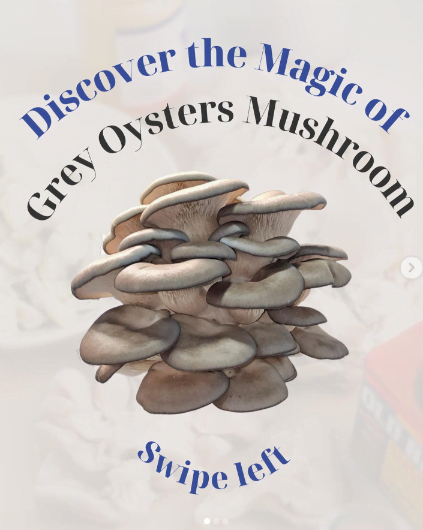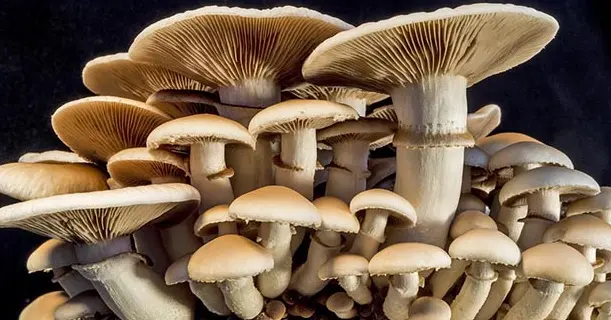In this article, we’ll dive into the world of mushrooms and uncover 15 cool mushroom facts. These showcase their astonishing diversity, uses, and even their role in our ecosystems. Prepare to be amazed!
Mushrooms have always held a mysterious allure, with their unique shapes. It has diverse colors, and an incredible ability to thrive in the most unexpected places. Not only are they a culinary delight, but mushrooms also possess a wealth of intriguing facts. That will leave you in awe of these remarkable fungi.
Top Cool Mushroom Facts
The top cool mushroom facts are the following:
- The Largest Organism on Earth: Hidden beneath the surface of Oregon’s Malheur National Forest lies an astonishing discovery. Armillaria ostoyae, also known as the honey fungus, holds the title of being the largest organism on Earth. This interconnected fungal network spans over 2,385 acres and is estimated to be thousands of years old.
- Mushrooms are Ancient: Mushrooms have been around for a very long time. Fossil records suggest that mushrooms have been on Earth for over 1 billion years. This makes them some of the oldest living organisms.
- Bioluminescent Magic: Imagine a mushroom that can light up the night like a firefly. Some species of mushrooms, like the Mycena chlorophos, possess bioluminescence, creating a mesmerizing natural light show in the darkness of the forest.
- A Myco-Medical Marvel: Penicillin may be famous for its role in modern medicine, but mushrooms also harbor potent medicinal compounds. The Turkey Tail mushroom, for example, contains polysaccharide-K (PSK), a natural compound known for its immune-boosting properties and potential cancer-fighting abilities.
- The Bizarre Zombie-Ant Fungus: The Cordyceps fungus takes control of ants and turns them into “zombies.” It infects ants, compels them to climb plants, and eventually forces them to burst, releasing spores that infect other ants below. This eerie behavior has inspired many sci-fi and horror stories.
- The Edible Art of Mycophagy: People worldwide indulge in mycophagy, the practice of consuming mushrooms. From the coveted truffle in European cuisine to shiitake mushrooms in Asian dishes. These fungi are not just delicious but also offer various health benefits.
- The Hidden World of Mycorrhizae: Mushrooms have a symbiotic relationship with plants called mycorrhizae. These underground networks of fungi help plants absorb nutrients and water, contributing significantly to forest health and ecosystem stability.

Image Source: Instagram @mushroomfacts
Other Cool Mushroom Facts
Other cool mushroom facts are the following:
- A Source of Natural Dyes: Ancient civilizations used mushrooms to create natural dyes. People employed the vibrant colors of the fly agaric mushroom, for instance, to dye clothing and other materials.
- The Fungus Among Us: Fungi are everywhere. You might be surprised to learn that your favorite cheese, beer, and bread owe their flavors to the action of yeast, a type of fungus.
- An Astral Connection: Mushrooms have inspired art, literature, and even spirituality for centuries. Indigenous cultures have been using species within the Psilocybe genus with psychoactive properties for thousands of years in their rituals.
- A Hidden Treasure: Truffle hunting involves specially trained dogs and pigs to locate these precious underground mushrooms, which can be sold for astronomical prices in gourmet markets.
- The Humble Beginnings of Penicillin: The discovery of penicillin by Alexander Fleming in 1928 marked a pivotal moment in medicine. This antibiotic, derived from the Penicillium fungus, revolutionized the treatment of bacterial infections.
- A Vital Role in Decomposition: Mushrooms play a crucial role in breaking down organic matter in forests, aiding in nutrient cycling and soil enrichment.
- The Fungus that Survived Chernobyl: The Chernobyl Exclusion Zone in Ukraine, one of the most radioactive places on Earth, is home to a black fungus known as Cryptococcus neoformans. Scientists are studying how it thrives in such harsh conditions.
- Mushroom Cultivation on the Space Station: In 2019, the International Space Station successfully cultivated and harvested edible mushrooms. This experiment paves the way for sustainable food production during long-duration space missions
Read More: Fun Facts About Onions | You Didn’t Know Before
Conclusion
Mushrooms are not just another ingredient in your favorite dish; they are a testament to the wonders of nature. From their role as the world’s largest organism to their use in medicine, art, and even space exploration, mushrooms continue to captivate our imagination.
As you delve deeper into the fascinating world of mushrooms, remember that there is so much more to discover about these remarkable fungi. So, the next time you savor a mushroom-infused meal. Take a moment to appreciate the incredible journey that led it to your plate.
Mushrooms, often shrouded in mystery, reveal a world of astonishing secrets. These fungal wonders, more ancient than dinosaurs, have been thriving on Earth for over 1 billion years, making them some of the oldest living organisms. But there’s more to mushrooms than their age; they’re a vital part of our ecosystem, forming underground networks with plants to exchange nutrients and water.
Some mushrooms even put on dazzling displays of bioluminescent mushrooms that light up the dark forest with an enchanting glow. Not just nature’s recyclers, they also hold medicinal potential, with certain species harboring compounds that boost our immune system and potentially combat cancer. And for those intrigued by the mystical, the Psilocybe genus boasts species with psychoactive properties, a source of fascination for centuries.










